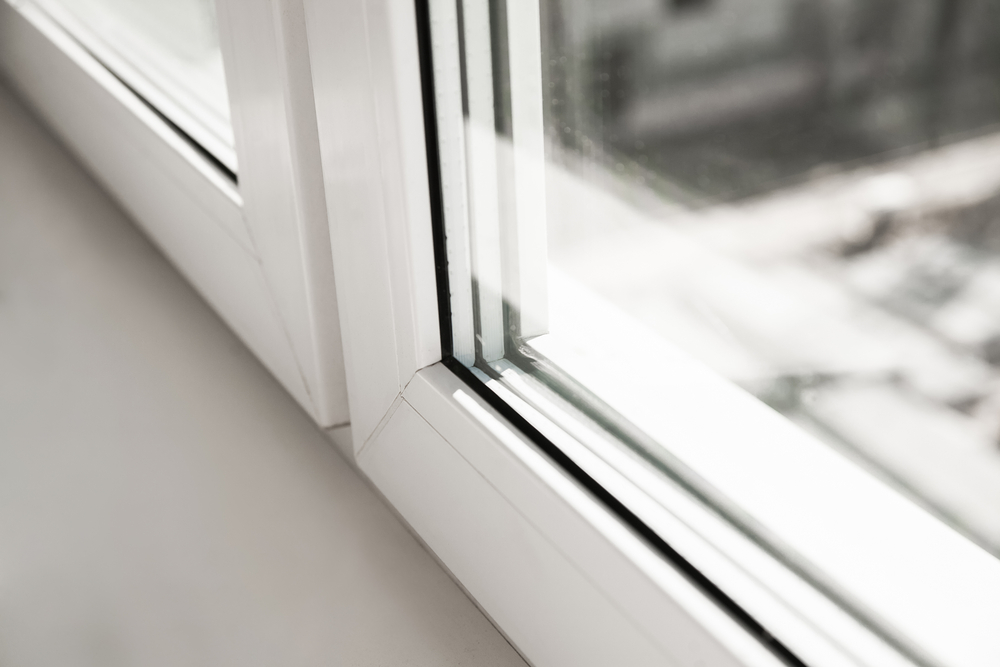How Old is My Double Glazing?
If you've moved into a new residence or can't remember when you last replaced your double-glazing, the easiest way to find out the age of your double glazing is to visit the FENSA website. Your contractor would have registered your window certification if they were fitted after April 2002.
Alternatively, speak to local window fitters in your area who can tell you how old your double glazing is and whether you need replacements. Fill out the form below and speak to double glazing experts in your area - for free!
Not to worry if you believe your windows are older - we'll run through the various options to confirm how old your double-glazing is!
Many homeowners want to ascertain when their windows were installed to call on unit warranties or installation guarantees or determine the double-glazing installation date before listing a property.
Verifying the Age of Your Double-Glazed Windows
As we've mentioned, any double-glazed windows fitted after 2002 should have been registered with FENSA, a nationwide regulation scheme that ensures new windows meet all the building regulations requirements.
FENSA offers a database of all lodged certifications, so it's pretty easy to trace your installation date if it was in the last 15 years.
Otherwise, you have several potential solutions:
- The date stamp inside the sealed unit isn't the fitting date but indicates when the window was manufactured - but it could give you a pretty good idea.
- CERTASS (the Competent Persons Scheme) installers may have registered work against your property address.
- Warranty or guarantee paperwork should have been included with your property purchase particulars, but your conveyancer or solicitor can help if you can't find any information within your paperwork.
If none of these routes proves useful, you can also run a check on planning permission applications with your local authority or ask a window fitter to survey your site - they'll normally have a fairly good idea about how old the windows are.
Get quotes for new windows
See how we work below.
Factors Impacting the Longevity of Double-Glazing
Windows can age at dramatically different speeds. That depends on the material of the frames, quality of installation, and whether your property has shifted or settled in the meantime.
Double-glazing is undoubtedly one of the highest-demand glazing types on the market. Still, there is a world of difference between contemporary windows with exceptional insulation properties and the original glass fitted in the 1990s.
Your double-glazed windows can last from ten years to 50, but a south-facing unit in direct sunlight could experience thermal pumping more quickly than a less exposed panel.
Thermal pumping means that the gas contained within the two glass panels starts to expand and contract in response to heat - stressing the unit seals.
Over time, seals will begin to fail due to tiny, invisible fractures, which you'll often first spot through side effects such as condensation between the glass or dampness seeping into your property.
The Benefits of Knowing How Old Your Double-Glazing is
One of the core reasons it helps to know how old your double-glazing is that you might have the option of claiming against a warranty or guarantee to repair the damage or even replace your glass if it starts to fail.
Buyers will also commonly ask about the age of work on your property if you decide to put your home on the market.
Even if you're unsure of a precise date, giving a buyer some information about when your windows were last replaced and who carried out the work can be valuable.
You'll reassure them that they won't need to budget for new windows or have a warranty to call on if needs be.
Much of the time, the crucial factor is whether your windows are performing well. Although we can indicate average lifespans, this is rather arbitrary and depends on a host of variables.
Next, we'll explain some of the signs that mean your double-glazing needs replacing sooner than later - no matter how long ago it may have been installed.
Signs Your Double-Glazing Needs Replacing
Multiple potential indications reveal that your double-glazing isn't performing well, although it's impossible to put an exact date on when this might happen.
As we've discussed, windows are as effective as the materials they're made from.
A poor installation process could result in gaps or cracks, particularly if you live in an older or newly built residence susceptible to tiny shifts.
Here are the key reasons you might decide it's time for a double-glazing replacement:
- Condensation droplets appear between the glass panes: when this happens, the seal isn't working, and the gas in between starts to seep out, being replaced with moisture.
- Water leaks: any leaks around the frame mean that the seal is wearing down, or the drainage holes are blocked outside, so dampness is reaching the interior of your property.
- Cold draughts: one of the crucial reasons you may choose double-glazing is that it improves your home's energy efficiency and stops heat from escaping. If you feel a cold breeze when you sit next to a window, it's a sure sign that the double glazing isn't working as it should.
- Excessive outdoor noise: although specialist soundproofing treatments are advisable for high noise environments, double-glazing can effectively reduce sound pollution. If you start hearing more noise, it's probably getting through a crack in the window structure.
- Staining or damage: although all windows will show a little wear and tear as they begin to age, any rot, visible dampness or cracks are a red flag that your double-glazing is no longer weather resistant. It's worth getting this addressed as quickly as possible to avoid further problems.
- Fading furniture or walls: double-glazing carries UV ray protection (although the level of shielding isn't as good in old double-glazing). If furniture, carpets or curtains are fading, it's likely the double-glazing needs an upgrade.
- Sticking windows: when the locks, frames, or handles start to stick and become tough to manoeuvre, the structure has probably warped due to gradual water ingress over time. We'd recommend consulting a window fitter, as a frame that is difficult to open or close can cause a huge safety hazard in the event of an intrusion or fire.
Modern double-glazed windows must be rated at least C or above (and typically significantly higher).
Most commercial-grade double-glazing is either A or A+ rated - important factors for your energy efficiency certification.
If you notice anything untoward, including condensation, draughts, cold patches, dampness or signs of wear that aren't attributable to the age of your windows, we'd suggest contacting a local window fitter at your earliest convenience.
Minor damage - such as a slow leak - can become a far bigger problem if left unresolved, with consequences including structural timber damage, permanent staining and the need to carry out repair works.
Checkout the video below which gives you a few tips on how to tell the age of your windows:
Frequently Asked Questions - How Old is My Double-Glazing?
Below we've answered some of the frequently asked questions about working out how old your double-glazing is and why you might need to find out.
How Do I Tell How Old My Double-Glazing is?
The easiest option, provided a contractor fitted your windows in the last 15 years, is to use the FENSA service, which holds a database.
If you're in the process of selling, you can request a copy of the installation regulation certificate and track down details such as the name of the installer, the manufacturing brand, and the actual age of your glazing.
Windows over 15 years old may still be registered through the Competent Persons Scheme, or you can ask a local glazer to give you an estimated installation date.
Some windows require planning permission, so you might have luck looking at the planning portal archive for your local authority.
How Often Should I Replace Double-Glazed Windows?
It's tricky to say with certainty how often you should replace double-glazing because it depends a lot on your property, the window size, installation process, and how much exposure and direct sunlight the panels experience.
Roughly, double-glazing should last at least ten years, although most manufacturer warranties are 20 years as standard.
Guarantees for window installation work tend to be for about 20 years, although that's an industry standard, and you may find that you're offered a robust warranty for a longer period.
A common scenario is that you get a warranty against the glazing and frame for 20 years and a guarantee against the installation work for ten years - although you need to confirm whether that guarantee covers all the elements of repair or replacement work.
Why Should I Check the Warranty Details Before Ordering Replacement Double-Glazing?
Warranties can provide peace of mind, but it makes sense to read the terms carefully before you call on a contract to cover the cost of new double-glazing.
Many such guarantees cover the material supply, but none of the associated labour or ancillary costs that are linked to removing a faulty double-glazing unit and installing a new window.
Most new windows will come with an installation certificate, energy performance rating, building regulations certification and a record of the FENSA registration, which should be plenty of information to put your mind at rest.
It's always important to shop around and compare quotes, even if you have a warranty, as beefed up charges for additional work may mean another local contractor is more cost-effective.
Get quotes for new windows
See how we work below.


